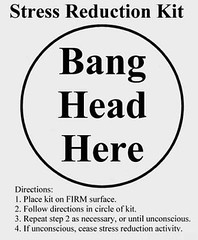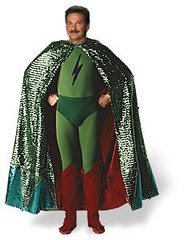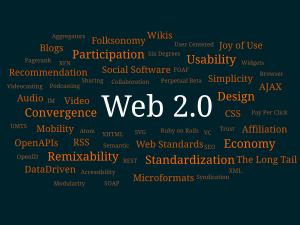Thoughts on marketing, technology, start-ups, new product launch, branding, leadership and more from Jim Gardner of Strategy180. Find out more at www.strategy180.com Because Results Matter.
Tuesday, December 29, 2009
In which he foretold the future.
I said:
On December 31, 2009:
Dow Jones (currently at 8,932) will be at 9621 points
Oil (currently at $40.50) will be $59 per barrel
Interest Rates (the Fed Funds Rate, currently at 1.00%) will be: 1.00%
Actually, on December 28, 2009:
Dow Jones (currently at 8,932) is at 10,547 points
Oil (currently at $40.50) is at $78 per barrel
Interest Rates (the Fed Funds Rate, currently at 1.00%) is at: .50%
Prediction comments:
(I said) Uncertainty is driving the market and the economy; once some certainty arrives with new administration - for good or bad - wild swings will stabilize and the widely oversold market and general malaise will slowly lift.
What happened:
Uncertainty was driving the market and the economy; but any sliver of not-bad, or less-bad news, swung the pendulum back just as wildly as the markets moved to cover shorts and other dubious financial mechanisms. The seating of a new administration, alas, had nothing to do with it as the market didn't settle for months after the inauguration.
Confidence comments:
(I said) Business decision-makers will become comfortable de-coupling their decisions in the real world from abstractions like the Dow. But once that fog clears, the impact of government intervention on national debt and as a general signal of the new regulatory environment will be a drag on growth.
What happened:
Ooo. Seems I was on the money; particularly regarding new regulations - and predicted tax law changes. Yet something went unsaid - the new normal of a higher savings rate, less consumer spending on credit, and general 'new religion' took hold on main street.
So there you go, there's a lot more to the year past than a brief blog post, and others would question some of my inferences, but in the end I was more pessimistic than necessary - or perhaps just more realistic - about the real state of the 'main street' economy. But the reality is far more immediate than Wall Street prognostications... to paraphrase Ronald Reagan, "Are you better off today than you were a year ago?"
Happy New Decade.
Friday, December 11, 2009
The price is falling! The price is falling!
Its a valid subject, but most of these articles are promotion-oriented. What hasn't been discussed as much is the role of price strategy in a sagging economy, and generally. This especially occurs to me today because of a current client project, where pricing strategy is the current key gating concern prior to product launch.
Obvious Secret #1: Pricing strategy, especially in a weak economic environment, has little to do with, well, price.
Even in the best of times, great products, great promotions, clever ads and a loyal base can be undone by a misguided or misapplied pricing strategy. This is because left to their own devices, finance and sales executives will see sagging demand as a numbers issue and not a brand issue. Plus, it is expedient to react instinctively with a red pen (cutting prices) when profits shrink and sales falter.
Bad plan.
Unstudied discounts are not as easily undone tomorrow as they are done today. Price cuts are a short term solution to a larger, longer term issue; that is, the product hasn't established the brand position to maintain margin in a discount environment. Understand that price cuts are welcomed by consumers but always create subtle dissonance - an inability on the part of the consumer to properly relate price to value, so when the market returns upward, as it always does, this results in a nearly Sisyphean effort to re-establish a brand position held prior to the discount. Pricing is not a cost issue - it is a value issue.
Understand the way customers make buying decisions and become far more visible, and more efficient, in delivering on these criteria; this will always be more effective in building recession-proof brands. This is because pricing is a long-term strategy, not a short term tool. When the economy sours, there are other levers to pull - operating costs, added value, extended hours, free upgrades. Think about supplier pricing and work new billing models to manage cash flow. Invest in money-saving IT investments such as Unified Communications and collaboration products. Reevaluate your market position and consider new marketing initiatives to go after markets competitors might have recently abandoned. Fire some costly customers. Adjust invoicing offers and procedures to improve cash flow and reduce defaults. These tools and others are manipulated in good times and bad with far greater flexibility than price, which can only move in two directions: up, or down.
Its easy to be Chicken Little and think in blocks of fiscal-quarter-bound panic over a current fiscal situation, but creating and applying the right principles for pricing allows for decisions that over time not only weather current storms, but position a company for consistent growth over the long haul.
Monday, November 30, 2009
Using Context in Creative - Part Two

Monday, November 09, 2009
On worry and inaction: The sequel
Sunday, November 08, 2009
On worry and inaction
His comments reminded me of something my mother often said: "95% of things you worry about never come to pass."
Of course, its that 5% that keep us up at night.
As it pertains to our business life, if, as Peter Drucker is credited with stating, "the best way to predict the future is to create it", then 100% of our angst can be squeezed to 5% insignificance by the simple act of doing. Dire warnings and worry generally come with the same highly unlikely assumption: "If things do not change, ..." That peculiar assumption ignores the fact that humans - particularly capitalist humans - are not given to inaction. Even our base 'fight or flight' instinct indicates an action of one type or another. Change is inevitable.
And so it is with this crisis. We're not out of it, not by a long shot, and our myriad collective and individual actions will differ in effectiveness and certainly create new crises even as they create new solutions. But our reactions to events and the actions we take are all we've got and will continue to alter the linear path.
If history is any guide, that's more than enough.
Tuesday, October 20, 2009
All Work and No Play
 Image via Wikipedia
Image via Wikipedia
My candle burneth on both ends.
So that brings me to offer this public service announcement for those of you who are weary of the world of work. Yes, I know that we are glad to have a job and feel it unsympathetic to those who wish they had a job to complain about, but as a Forbes ad asked years ago: "Which is worse, to be laid off on Friday or to pick up the slack on Monday?" There's not much to be said about either.
Take a moment and review these websites... and remember to frown into the screen as you peruse these helpful sites. No, not because you'll be frustrated or angry, quite the opposite. Frown so others think you are researching something critical. Because, after all, you will be.
http://my-bad-habits.blogspot.com/ Ian Newby-Clark is a professor of psychology who studies our habits and offers interesting insights as to why we do what we do and why we don't really need to.
http://www.revrun.com/ Philospohy and wisdom from an innovator in the hip-hop movement. (Why do you look so surprised? Because Run has something to say or because I know who he is?)
http://lifehacker.com/ Simplicity for the geek in all of us.
http://www.fourhourworkweek.com/blog/ Author Tim Ferriss is a divisive character, but he's always good for a little wisdom or interesting story here and there.
http://zenhabits.net/ Leo Babauta says it best on his site: "Zen Habits is about finding simplicity in the daily chaos of our lives."
Do you have other insights or websites on self-improvement, life balance, or simplicity? I'd love to hear about them!
Thursday, September 17, 2009
Do The Math

'Biggest', 'Better', Fastest', 'Smallest', 'Cheapest' are nice claims but of little* value. Only slightly better are percentages, useful in any circumstance when the real numbers are small to begin with ($0.04 is a penny less than $0.05, but it is also fully 20% less)
I was reminded of this point by a number** of excellent recent blog entries that are worth a read:
How to Make Your Data Matter, Fast Company, by Dan and Chip Heath - Notable insight: "...an $800 billion stimulus works out to be the rough equivalent of seven weeks' income for an American household. Is that worth it? Seven weeks' worth of work to stave off a potential depression. Or maybe you're appalled. Regardless, we can finally have a real argument, because we have a better idea of what we're arguing about."
What Does A Trillion Dollars Look Like?, courtesy of cnbc.com - Notable insight: "With the largest market cap among U.S. companies, Exxon Mobil’s value of publicly traded shares is over $345 billion (as of 3/31/09). If this amount was denominated in $100 bills, the block of Benjamins covering the area of a standard American football field would stack to a height of about 28.7 feet."
Ultimately if your numbers are impressive or modest, whole numbers or percentages, what matters is that your audience understands them and relates to them in clear terms that mean something to them.
(*specifically, 86% less value, that is.)
(** exactly three)
Wednesday, September 09, 2009
Thank you, Captain Obvious
Know your product (marketing software), know your audience (marketer). So far so good.
But the first line of copy?
"Remember when marketers with the biggest budget usually got the biggest customer base? Those days are gone. Forever."
Well, first, I never recommend writing copy that opens with a rhetorical question. Because it might not be rhetorical to your target customer, and once they answer no, you've lost them. And in this case, I answer 'no'. As in, "No, I don't remember when marketers with the biggest budget usually got the biggest customer base. And neither does anyone who started practicing advertising and marketing at any point following the Johnson administration."
Second, um, huh? This is compelling copy? Do they think I - or any marketer who has reached a point in their career where they are a decisionmaker - or even an influencer regarding such software - was actually sitting at their desk, thinking, "Geez, if only I could spend more on a wildly chaotic, unstructured campaign that lacks any sense of accountability, like the guys on Mad Men"?
"What despair. I guess we'll just be second rate until I can get more money from the CFO."
Not so much.
Here's what's wrong with marketing today: Even a marketing-centric company can't piece together decent marketing copy, relying instead on empty platitudes, because they don't understand that their target audience is far more sophisticated than they give them (us) credit for.
What might be worse: Perhaps marketers still aren't all that sophisticated, and this company's copy is more on-target than even I want to admit.
Monday, September 07, 2009
Fear and the American Consumer
"Luxury buying is off in a major way - reports from Neiman's, Saks, and all top brand name retails report the same cut back from their consumers. So the company that must survive is making sure they offer solid business cases with every offer. Understanding the consequence of how the CEO, at the business your selling to, gets paid can pay off for you, the seller. As consumers, we are still spending, just not in the ways we were before. It is highly unlikely, given the cost of bailing us out of our current economic situation, that we will in our life time, see a return to what we knew as conspicuous consumption."
Interesting also is his observation in the same article that the increasing homogeneity of automobile design also points to the idea that 'standing out' is 'out'.
Whether or not I agree that recent poor auto design is a sign of a larger cultural shift, the apparent death of 'conspicuous consumption' is an interesting argument and worth evaluating from a marketing perspective. Given rising national and personal debt, a worldwide credit crisis, inflationary pressures on energy and food stuffs, plus the impact of environmental awareness and regulation, comfort with high levels of consumption no longer looks - or feels- 'right'. There are even anecdotal stories of monied customers foregoing store-branded shopping bags in order to keep a lower profile on their ill-timed retail therapy.
For years many marketers have relied primarily on brand prestige (associating personal attributes onto or from a product) and constancy (that is, 'I know what I'm getting', aka 'no one ever got fired for buying IBM') to maintain market share and margins. With the new normal of a slower consumer engine on the economy, we must re-evaluate what motivates customers now. I see these four are among the leading motivators:
Value: The rise of the big box discount chains, while suspect themselves in this era of the 'new normal', provide insight into consumers desire to buy in bulk, reduce packaging, and generally 'stock up' in what is perceived to be a very volatile period in our history.
Necessity: Discretionary spending is off, minimalism is in. Name your own example: Even here in truck-crazy Texas, Hummers are criticized, while the sparse Prius hybrid is envied. Vacations are out, staycations are in.
Savings: Once arguably in negative territory, personal savings in the United States has turned to a pace not seen in years, some estimates now as high as 4%. Anti-debt radio personality Dave Ramsey has a slogan that says it best: "...the paid off home mortgage has taken the place of the BMW as the status symbol of choice."
Fear: Arguably the previous three motivators are a result of fear to one degree or another. But this is a non-specific, generalized fear of a quickly shifting geo-political and economic landscape. Remember what happened to action movies after the Berlin Wall fell in 1989? Stallone had to find new enemies because the Ruskies were our pals. It was easy in an earlier era when Russians were the bad guys and we had a collective target for our enmity. But the new political environment, unnamed terrorists have exacted far more damage to our lives and psyches in the last decade than the Russians did in the prior fifty years.
Once, leveraging FUD (fear, uncertainty, and doubt) was the last refuge of marketers unable to sell a product or solution on merits. Today, it seems to be the self-imposed primary motivation of consumers. And in a world where banks are bankrupt, car manufacturers are nationalized, real estate is no longer an inflation hedge, terrorists have us disrobing to get on an airplane, and the national debt clock needs more light bulbs, who could blame them?
Wednesday, August 26, 2009
Social Media Resistance Fading Fast
Read more: STATS: Social Media Resistance Is Fading Fast
"Only 13% of companies surveyed have no plans for social media in the future."
A decade ago, that's what they said about getting a website.
Thursday, August 20, 2009
Social Media, personified
 If your favorite social media site were a person, who would they be? An artist? Engineer? Troublemaker?
If your favorite social media site were a person, who would they be? An artist? Engineer? Troublemaker?In a fun post "Internet University Cast" by artist and DeviantArt contributor elontirien, social media sites are brought to life with personalities inspired by a short story.
A common question in the branding process has always been something along the lines of giving a brand a personality: "if your brand were a fictional character, who would it be?" Such an exercise allows us to identify personality traits and emotions that the brand is intended to produce.
And while I find the Google character a little uptight for my imagination, the others appear spot-on. I especially like the young Twitter character, that seems to underscore the fact that Twitter shares a narcissism and self-importance common of a 'tween'.
For another similar post regarding the Obama and McCain 'brands', click here.
What is your brand? An researcher like Jonas Salk? A granddad like your own? A revolutionary?
Thursday, August 13, 2009
How much green is there in green?
Not surprisingly, specific audience categories offering unique attitudes toward the 'green movement' differ in the value they place on such products. Six distinct consumer groups within the overall adult consumer population were identified, with “Green Tech Leaders” willing to pay far more for a green certified product, while “Anti-Greens” are not willing to pay much more at all. That alone is interesting as it still indicates a willingness to perhaps consider the positive social implications of buying green even to those who do not value it themselves. This indicates that green product attributes are valuable, but not widespread enough to accommodate anything but a modest price adjustment.
From a share prospective, a green alternative may move the needle. From a margin perspective, this study indicates that their isn't yet much green in being green.
To learn more about Rockbridge’s Green Technology Segmentation, click here.
Sunday, August 09, 2009
Nowhere to hide
Olympic phenom Michael Phelps was photographed months ago taking a bong hit at a college party. (I blogged on the topic here.) He lost some major endorsements, apologized, and hopefully learned an important lesson. Whether that lesson is "Just Say No" or "make sure you can trust the people you party with" is unknown, but truth is, both are valid lessons.
I'm not linking to or reposting any of these related images, and I'm not going to comment with some false air of indignation about the behavior of these athletes. I actually tend to take the position of SNL comic Seth Meyer in this outstanding SNL rant. ("If you're at a party and you see Michael Phelps smoking a bong and your first thought isn't "Wow, I get to party with Michael Phelps" and instead you take a picture and sell it to a tabloid, you should take a long look in the mirror...") It isn't in my nature to build people up just for the thrill of tearing them down - as if accomplished, public people were nothing more wooden blocks stacked by some sugar-ravaged five year old. In my experience, most tend to punish themselves just fine on their own.
My marketing mind however pauses and recognizes that each of us, our companies, and our values are subject to the whims of small minded people and rabid opponents who are using the tools of the Internet and social media to gain even the most morally tenuous ground or simply force their way onto the 15 minute stage with a sensational bit of useless gossip. Therefore, it is critical that people and organizations not ignore these new communication tools, but engage them to monitor and proactively defend their brand - whether corporate, product, or personal. As social media consultant Shama Kabani stated in a recent presentation to CEO Netweavers, "...whether or not you want (photos and personal information) out there, its out there. The point is to build up a credible persona in person and online to counter any negative consequence."
Fortunately for Hamilton and Phelps, they've handled their scandals well, offering quick acknowledgment and heartfelt apologies. In the end, the best revenge is their stellar athletic performances since. In the few days since the Hamilton story became public, he's been hitting .360, and for his part, last week Phelps once again set a new world record, this time in the 100m fly. Sometimes the best response is continue to do what you do best.
Or in other words, in a world where all the hiding places are mic'd, let the world know that you are still trying to be the people our dogs think we are.
Monday, August 03, 2009
Shackin' up
1. We think "shack" conjures up many positive store images.
2. Some customers and the investor community refers to us as "The Shack" already.
3. We can't afford the real Shaq as a spokesperson, and he's in Cleveland now anyhow.
4. Basic research could have told us that "The Shack" is actually a popular Christian novel regarding the anguish of a parent over the rape and murder of his daughter. Oh, well.
5. Because... "The (Love) Shack is a little ol' place where we can get together! (Don't forget your jukebox money!)"
The answer is #2, although any of the answers is equally bad, and equally plausible.
That's right. RadioShack's most avid customers and "the investor community" (really? that's their target with this campaign?) already refer to the company (despairingly, perhaps?) as The Shack, so they figured they'd just co-op the term as their own in a desperate grab to leverage, and therefore destroy, any credible independent brand affinity.
Besides, marketing theory aside, every middle school kid in America already knows that giving yourself a nickname is just lame.
Noisy launches
The product is the thing.
The company is not the thing. (An exception perhaps is Apple - which uses its powerful corporate brand to great effect.)
The distribution channel is not the thing. (Your distributors may incorrectly argue the point, especially VARs.)
And most certainly, the ad is not the thing. (Your agency's creatives may disagree, especially if the ads are spotlighted in an article like this one in Advertising Age.
Once you go down the path of suggesting that a "creepy" and "unsettling" advertisement is "doing its job" because people are talking about the advertisement (and not the product per se) you can quickly find yourself sliding down a slippery slope trying to quantify 'mindshare' and 'visibility'.
To be certain, if the ads are effective, they'll be talked about... but more importantly, so will the product. A truly effective advertisement quickly steps back and allows the product to take the spotlight.
After all, no one wants to hear the announcer keep talking once the band takes the stage.
Thursday, July 23, 2009
The Hype Cycle
You know, the path between 'slideware' (unproven ideas that only exist in PowerPoint slides) and 'general availability' (store shelves).
Speech recognition is one of these technologies. In 2000, they were admittedly my slides suggesting that a speech platform was 'around the corner'. In 2003, when they were Microsoft's slides (with the introduction of their speech server) and again now, these slides are re-issued with a Google logo.
I know a lot of earnest people in the field of speech recognition and I know they spend a great deal of time refining and improving speech recognition capabilities in myriad applications. In this article, you'd think that a decade of inprovements, trial and error, and frankly, millions of VC dollars hadn't already been expended when Larry Page and Sergey Brin decended from the heavens, touched the complicated technology, and made speech 'finally viable' with Google Voice.
Speech technology is already a viable (and functioning) technology. But I also understand that there is a required ecosystem of hardware, software and services in speech technology to make it 'work' as a fully-functional platform of the future, in spite of the hype that accompanies a Google launch of anything from a phone OS to breadsticks. ("Peak of inflated expectations" in graph.)
It is a gentle reminder as product marketers, we understand that it is as important to build expectation and excitement at a launch as it is to control those expectations. The marketplace doesn't allow marketers to underperform to their promises, a lesson we knew but were (supposedly) reminded of with the Internet bubble. As this article points out, and Microsoft discovered, speech is a human construct that requires a great deal more than money and technologists - even Google money and Google technologists - to make it meet the long-held expectations we have held for speech as an interface in the near term, and to overcome the long-held cynicism that a future feature-rich, reliable 'speech-driven platform of the future' will now have to overcome to establish a marketplace. Speech has sat at the peak of inflated expectations long enough. It desrves to grow, but only if allowed to drop into Gartner's "trough of disillusionment" first (graph).
To be certain, speech will drive a viable comprehensive OS platform one day. Just not this Thursday. Or next.
Saturday, June 27, 2009
Unpopular popularity
In a study released by the Proceedings of the National Academy of Sciences, however, we find that, once again, there is a lot of truth to what Yogi Berra has to say. The study illustrates that the fall of an item or style in popularity mirrors its rise to popularity, so that items that become popular faster also die out faster.
These, my friends, are called fads. The study's authors were quoted as saying that “While it is easy to see products, ideas, or behaviors catch on in popular culture, less in known about why such things become unpopular." And this question is as critical a question to marketers as any.
In a cross-cultural, non-commercial study that harkens to Levitt's book Freakonomics, study authors Berger and Le Mens analyzed baby names in France and the US over the past century. The two researchers found a consistency in the rise and fall of given names - that the longer it took for a name to become common, the longer it took for the name to fall out of use. Parents interviewed indicated that they were simply unwilling to risk saddling their child with a name they perceived as 'faddish'.
For marketers, these results indicate that it is the perception of a trend that makes the creation of a fad self-fulfilling. While somewhat intuitive, there is often no scarcity or other economic factor that forces certain trends that 'hockey stick' in popularity to die out faster. Instead, the concept of 'the harder they fall' is based in the idea that people, for all their concern about fitting in, don’t want to be seen as following the herd. The key is perhaps in not controlling the growth, but in marketing the message - even as sales rise without apparent assistance from 'those guys in marketing' - that the growth is because of the value offered by the fast-growing product or service, and not transient fads.
And that will mean that in addition to trying something, marketing will keep people coming back, even as it gets more crowded.
Friday, June 26, 2009
Then we set his hair on fire...
"Cast as a god, the man embraced the role, seeking to remake himself in a pale, childlike image only he could understand. The endless cosmetic surgeries, the reclusive years at the Neverland Ranch and the bizarre pronouncements and behaviors are the stuff of legend. Of course, being reborn was something he could never achieve in life. The mighty, moon-walking King of Pop, largely a media construct himself, lost sight of the fact that we're simply not our own creations. Perhaps by now, an ever greater power has reminded him of that."
Certainly personal branding is important, but it is equally important to remember that ultimately, it all ends the same for each of us.
Tuesday, June 23, 2009
Because Results Matter
But they don't, and in the process, lower the bar of expectations and underestimate the value and influence of marketing.
And now the King himself - the Burger King - must understand that 'visibility' and 'mindshare', even 'frequency' and 'reach' are tools and metrics, not goals. This article in Ad Age indicates that the award-winning Burger King campaign is failing to gain ground - even cedeing it - to that ubiquitous clown and his league of banal but effective advertising and market positioning. When the much-lauded ROMI (Return on Marketing Investment) is in negative territory, even today's stock market looks like a better bet.
Because Results, after all, Matter.
Thursday, June 11, 2009
Ahead in the Clouds
Similarly, there was a time among established software developers (and users) when cloud computing (aka, Software as a Service, or SaaS) was viewed as too risky, too unstable, too limited in its feature set to ever truly replace local desktop software installations, excepting perhaps for CRM applications.
Today as WiFi/WiMax and general connectivity become increasingly ubiquitous, that desired connectivity is further leveraged by smartphones, net-reliant hardware and similar tools to make great inroads in market share. Laptops outsell desktops. The handset war (iPhone, Palm Pre and Blackberry Bold) is the new Coke and Pepsi, each phone the supposed savior of their respective companies. All this is driving a new expectation among the broader public for ubiquitous connectivity regardless of time, place or device. (Woah, déjà vous: I think I typed that on a PowerPoint slide back in 2001 regarding Unified Communications.)
Take note: The desire for always-on connectivity isn’t the driver – that was an assumed trend as early as 1998 – as much as it is an enabler. The real driver is the community of data and applications that the Web represents.
More proof: Microsoft Money, a desktop-based financial management package that had Microsoft power behind it and once enjoyed first-mover advantage, has been shelved by the Redmond behemoth, as they recognize the customer’s demand for integration and collaboration available with the SaaS models used by Intuit and Mint, among dozens of others – including their own MSN Money service. In rare candor, Microsoft states: “With banks, brokerage firms and Web sites now providing a range of options for managing personal finances, the consumer need for Microsoft Money Plus has changed.”
Note that Microsoft addresses the cloud not for its constant availability, but for the benefit of integration with the complementary applications, vendors and informational websites (“…banks, brokerage firms, and Web sites…”) that are facilitated through the web, and specifically, the collaboration that is common to Web 2.0. Intuit simply gets that the user experience matters, online and offline, and has always has outperformed Microsoft... nothing new for those of us tethered to their Office applications.
Web 2.0 is not just a curiosity or new marketing tool, but has now matured into a critical element of product development – today, mainly for software vendors – but tomorrow, perhaps also for manufacturing concerns. Like the new GM?
Tuesday, June 09, 2009
The Rules Of Business Still Apply
Social Media is beginning its shakeout. MySpace is struggling. YouTube is gaining traction as watching video online becomes a standard media, and Facebook is seeing continued growth, but much of it outside the U.S. as this market becomes saturated and curious Boomers drop off the site. LinkedIn integrates a number of useful applications and solidifies its position as a professional’s social media rolodex.
Now comes Twitter, off its highs of the CNN / Ashton battle for a million followers, a month after an Oprah mention, a curiousity to most and not yet monetized. Studies have indicated that most new visitors stop visiting after a month, and now a report that May’s growth on Twitter was anemic, although, importantly, the time spent on the site (by its active members) grew substantially.
So what’s next for Twitter? I’m not certain, but it is critical to recognize that Twitter’s celebrity users are essentially spokespeople and pitchmen for the site, not a business model in and of themselves. According to the rules of business where a company has an established and vocal ‘tribe’ of followers in its niche, the focus should be to provide value to its most loyal customers (visitors). This may mean perhaps, more integration with the hordes of third-party Twitter applications being developed, recognizing its role not as an interactive medium but a broadcast medium and provide services accordingly, and determine the best way to monetize the platform without alienating a customer base that is not used to be ‘pitched’ with advertising. It is then that Twitter can begin to expand and regain interest among businesses and individuals who will leverage the platform and applications using methods tested and proven by the early adopters.
‘The Oprah Effect’ will only get you to the lip of Geoffrey Moore’s chasm. The rules of business still apply as Twitter attempts to cross it.
Full disclosure: www.twitter.com/jimgardner
Tuesday, May 26, 2009
Is Social Media Making Corporate Websites Irrelevant?
Is Social Media Making Corporate Websites Irrelevant?
Posted using ShareThis
Wednesday, May 20, 2009
Mystery Meat
How about this mystery meat: A television-centered campaign that promotes an oft-derided product by hiding behind and talking up the virtues of its partners' products? It is what Microsoft is doing in their new 'Laptop Hunters' campaign, and according to a study quoted in this Fast Company article, it is working.
Microsoft cannot put lipstick on this pig, but it can cover that pig by ladling the value propositions of the hardware manufacturers whose equipment runs the buggy OS (Vista, aka OS7) on top of it.
Microsoft recognizes and leverages the one area the Apple cannot readily claim: value for the money, as PCs can be had for an order of magnitude cheaper than even the most budget-friendly Mac. It realizes that for all the hype around the Mac, the product, to many, doesn't deliver the value promised in its advertising. And ultimately, the product experience equals the brand, no matter how well executed the 'I'm a Mac' campaign.
Thus it appears that for the time being, consumers are holding their nose as they go for the PC. Just like swallowing mystery meat.
UPDATE: 7-15: Microsoft: Apple Told Us to Cancel the Laptop Hunter Ads

![Reblog this post [with Zemanta]](http://img.zemanta.com/reblog_e.png?x-id=341b98c5-0d56-484f-acf5-2f72a517ad75)

![Reblog this post [with Zemanta]](http://img.zemanta.com/reblog_e.png?x-id=28689f96-a55c-4bc3-b93f-4db81b9cf1f2)

![Reblog this post [with Zemanta]](http://img.zemanta.com/reblog_e.png?x-id=61508b73-5f77-4826-b8e6-cc363037be06)

![Reblog this post [with Zemanta]](http://img.zemanta.com/reblog_e.png?x-id=e63dca3e-3dcd-402b-ab74-8c0308df9330)

![Reblog this post [with Zemanta]](http://img.zemanta.com/reblog_e.png?x-id=8138c720-37e9-448d-96a5-c6bba168416b)

![Reblog this post [with Zemanta]](http://img.zemanta.com/reblog_e.png?x-id=ff4fbd6e-2214-47d6-a792-e1537e4bb104)

![Reblog this post [with Zemanta]](http://img.zemanta.com/reblog_e.png?x-id=c2fa06bf-0d60-48ae-8b1b-d8f2cc9f9291)
![Reblog this post [with Zemanta]](http://img.zemanta.com/reblog_e.png?x-id=b89feefe-3848-4794-8ed3-f158fdb8e5fb)

![Reblog this post [with Zemanta]](http://img.zemanta.com/reblog_e.png?x-id=0c47f9a5-45e4-471f-af1d-5247ba8eb001)

![Reblog this post [with Zemanta]](http://img.zemanta.com/reblog_e.png?x-id=3e5cbf52-1d86-4395-b11c-fd220581b735)

![Reblog this post [with Zemanta]](http://img.zemanta.com/reblog_e.png?x-id=3522dd0f-ceb4-4ae6-8ec2-a6c999fea194)
![Annoying Noises Prohibitted [sic]](http://farm4.static.flickr.com/3142/2898020303_635ed6118d_m.jpg)
![Reblog this post [with Zemanta]](http://img.zemanta.com/reblog_e.png?x-id=a348ac1c-b37c-412d-88a5-976fdc706b0b)

![Reblog this post [with Zemanta]](http://img.zemanta.com/reblog_e.png?x-id=7598d37f-7332-47e5-8476-1c1823648d08)

![Reblog this post [with Zemanta]](http://img.zemanta.com/reblog_e.png?x-id=8d36c571-277a-4adb-9f33-b195424a0738)
![Reblog this post [with Zemanta]](http://img.zemanta.com/reblog_e.png?x-id=9aaa47ae-314d-4640-8aa6-4b64d73a93d4)

![Reblog this post [with Zemanta]](http://img.zemanta.com/reblog_e.png?x-id=ddf2e776-f76c-4ea5-a772-8e5d6eae41f9)

![Reblog this post [with Zemanta]](http://img.zemanta.com/reblog_e.png?x-id=d343a55f-5b34-45a0-9ab7-19bd42ca6117)

![Reblog this post [with Zemanta]](http://img.zemanta.com/reblog_e.png?x-id=d4e09875-77c3-4217-8de8-c77228b771df)

![Reblog this post [with Zemanta]](http://img.zemanta.com/reblog_e.png?x-id=d76931c7-fa7e-4505-8f62-e51ce11d80b6)

![Reblog this post [with Zemanta]](http://img.zemanta.com/reblog_e.png?x-id=5b259d5b-9111-47b5-8e39-73c2462cfe70)